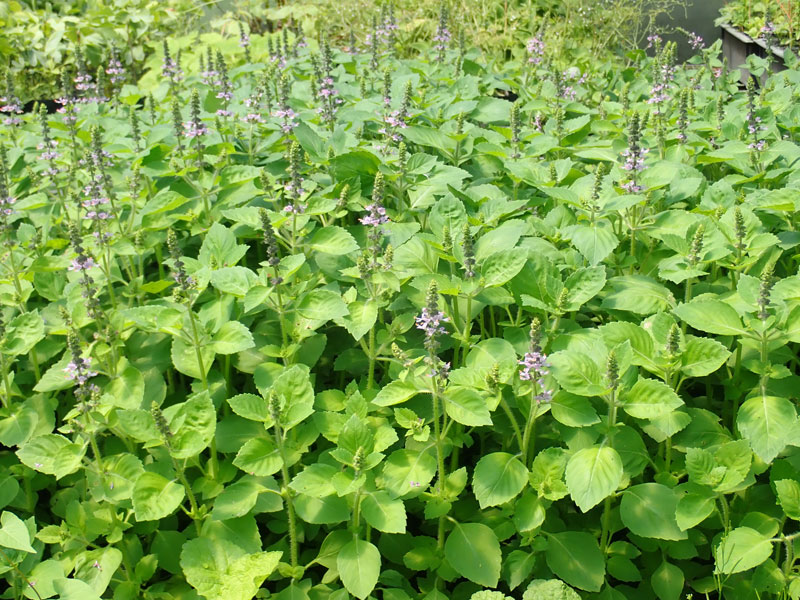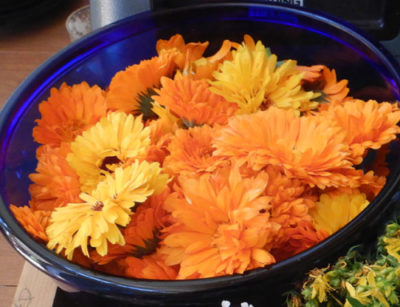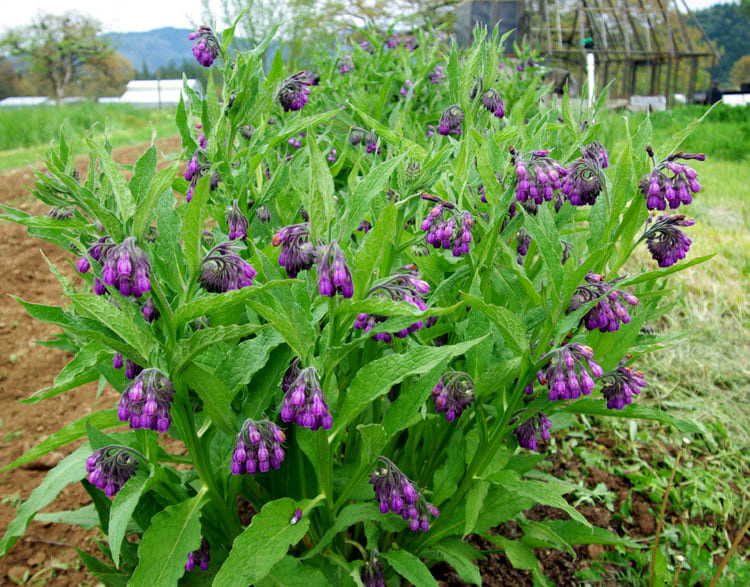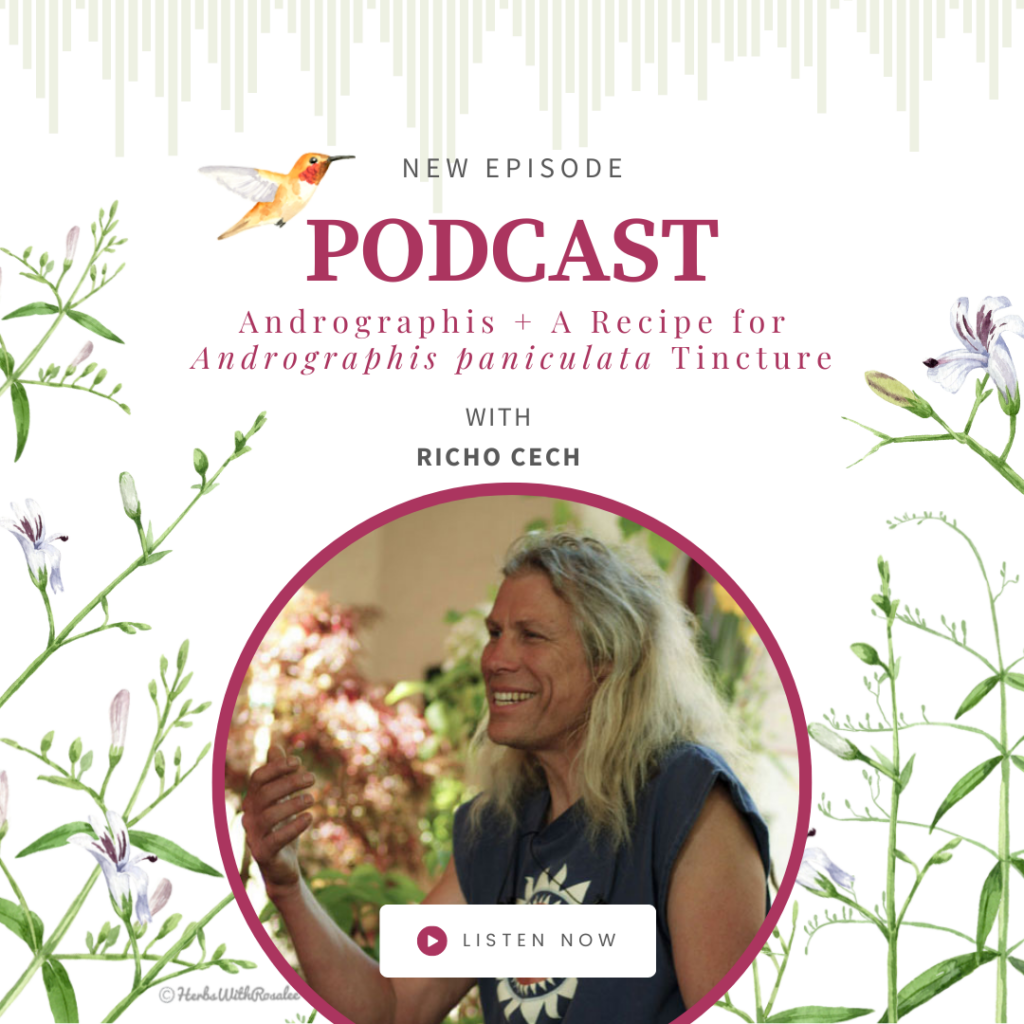
Simple success with just one herb is a great inroad. Start by planting some seeds of at least one of these easy medicinals in a pot on the windowsill or in a prepared bed in the garden.
Richo Cech
Easy not Peasy
Why is this introductory collection of herb seeds needed? A little bird told me that new growers come to our website at Strictly Medicinal Seeds are instantly overwhelmed. This is not our intent—medicinal herb diversity is meant to be healing and calming, not a subject that elicits the O word! So, these are among the easiest plants to germinate and grow. They are widely adaptable to temperate gardens across the USA. However, the reason we’ve put these herbs together is because they make the foundation of good herbal practice. Promoting home-based self-sufficiency in easy herbal medicine is our highest goal.
So how does one go about getting started in growing and using one’s own herbs? Simple success with just one herb is a great inroad. Start by planting some seeds of at least one of these easy medicinals in a pot on the windowsill or in a prepared bed in the garden. The directions are right there on the packet. Plant shallowly, tamp with love, water gently, and mark the spot. This is fun! Raise the plant up until it is sufficiently sized to harvest. Dry the leaves, rub them between your palms, remove the stems and make a cup of tea. Drink it and feel the desired effect. There, now you’ve got a good start!
Holy Basil (Temperate Tulsi, Ocimum africanum): Traditional wisdom is that projects begun with Holy Basil are blessed from the start. The plant is very fast to mature. Bees love it. The tea is tasty and uplifting. This grows as an annual and it is the only basil I know of that easily self-seeds. Remember how the seedlings look. When you identify them in the garden the next year, weed around them. Give the new plant some space. There now, you’ve got it again, and it cost you—nothing!
Calendula, Mixed Colors (Calendula officinalis): The quintessential medicinal herb. More can be done with these flowers than any other flowers on Earth. Tea, tincture, succus and salve. Understand the parts of the flower and what they do. The bright colors are caused by flavonoids that reduce inflammation and ease pain. The sticky resin has an antiseptic effect. Whole herbs, whole medicine and whole people. To find out more about how to grow and process medicinal herbs, get a copy of our book “Growing Plant Medicine” or “Making Plant Medicine.” These books start you off on a path that leads to a magical garden of your own making.
True Comfrey (Symphytum officinale): The most important ingredient in any good healing salve, comfrey speeds regeneration of damaged tissue. All good herbalists, gardeners, permaculturalists and growers of domestic animals are familiar with it. They know how to best make use of its multitudinous positive properties. So, the best way to get to know an herb is to grow it. Then, sit with it awhile, watch how it interacts with pollinators and other plants—gain a sense of its spirit. Then, study the literature and the science. That’s the definition of holistic medicine—a feel for the plant from every angle.
Yarrow (Achillea millefolium): Whenever I get wounded in the garden, I go for the yarrow to clean the wound and stop the bleeding. I just pick some of the deeply dissected leaves, rub them to a juicy mass, and apply to the wound. That’s how easy it is. Now that you grow medicinal herbs, you don’t have to buy expensive stuff to treat injuries. It’s all right there in the garden. This plant resides at the core of western herbalism.
Self Heal (Prunella vulgaris): This was the plant that introduced me to herbalism. The name really says it all. My dad, who was a doctor, took a dim view of my path in life. He wanted me to go to medical school. Instead, I meditated, planted trees, made babies, and lived a life in the wilds of Oregon. Once when my parents came to visit our rudimentary subsistence farm, sitting there at the table in the cabin with the fire crackling, I prodded him about medicinal herbs. “After all,” I said, “60% of pharmaceutical drugs are based on natural products.” “Well,” he allowed, “Some of those herbs do contain active tannins.” I went to the shelves and pulled down a jar of dried self heal flowers and set it before him on the table. After awhile, he brought the jar closer, twisted off the lid and took a whiff. For a moment, I thought he was going to sneeze. But instead he smile and said, “Smells lovely.” Self heal. I think it did him good.
For more information on how to harvest and process these and other fine herbs, we recommend our flagship book “Making Plant Medicine.”







Thanks. I am a beginner too, but completely hooked. I just finished reading an older version of your book from the library on growing medicinal herbs (which I absolutely loved) and so went to check out your website and see if I could buy your book – which looks like it has been updated – and you have other books too – yeh. I started growing artemisia for the first time this year as I heard it was useful but thought I was growing artemisia annua so I just went to look at the seed packet to check (it actually turned out to be artemisia absinthe) but guess what! The seed packet came from your nursery. What a coincidence! I had bought that and a few other seed packets from your website last year. How wonderful.
Hi Richo, I bought a comfrey plant but it has light blue flowers, not the deeper purple. Will the leaves and roots of this plant be medicinal or is it just an ornamental? Thank you for your blog, I plan on starting a medicinal garden.
it is medicinal
looked all over the website and the blog, but couldn’t find the answer to my question and that is, what’s the difference between True comfrey seeds and comfrey root. would love to read your knowledge. thanks
hi James, thanks for contacting! the true comfrey seeds are seeds for growing the plant. the true comfrey root is a live root to plant–it will get you the mature plant faster than planting seeds. Russian comfrey is available as live roots only–that plant does not make seeds. richo
I love the stories you share through out your website. Whether it be a blog post or a plant description, feels like a calming, hidden adventure to lovely insight.
Hello Elissa, If you can get ahold of me through Strictly Medicinal Seeds, I’ll send you one of my books that is full of such stories. Richo
I feel the same way Elissa … “a calming, hidden adventure to lovely insight”
Love this post, it is such a great way to begin the journey! I have loved getting my seeds from Strictly Medicinal, the packets feel like they are filled with love, hand grown, hand tended, hand harvested love, you can feel the power in the plants! Thank goodness for all of us that you listened to your heart and focused on your herb garden!
Hi Debbie, Thanks for this, it is appreciated. Sounds like you’re not a “firster!” Richo
I bought seeds from Strictly Medicinal Seeds with the idea of having a small garden with healing plants. I organized my little garden into a medicine wheel. My kids wanted me to show them how I did it so I typed it up to send them. I ended up putting it on kindle for easy access. I used 18 of the medicinal seeds I bought here and added some recipes to make using the herbs. It’s a great resource for a beginner. (Medicine Wheel: How to Create a Medicine Wheel in Your Backyard Using 18 Medicinal Herbs and Secret Recipes) I just thought I would share this 🙂
I love this Richo! I’m a true overwhelmed beginner and these word’s encourage me 🌈🌏🪺